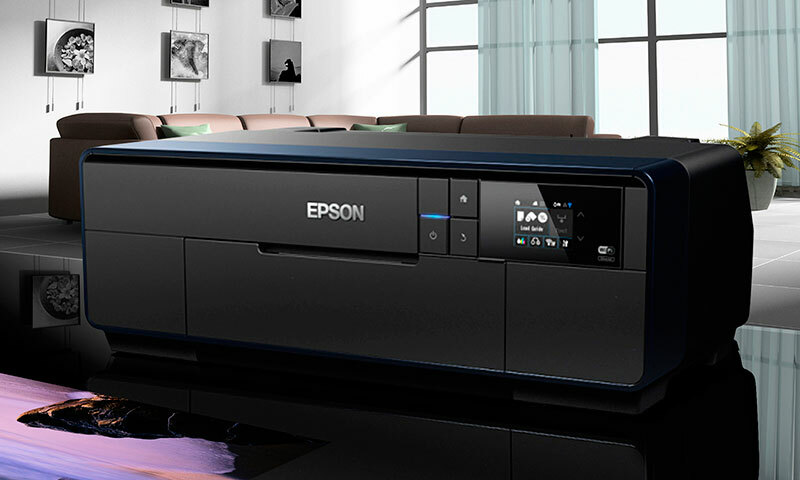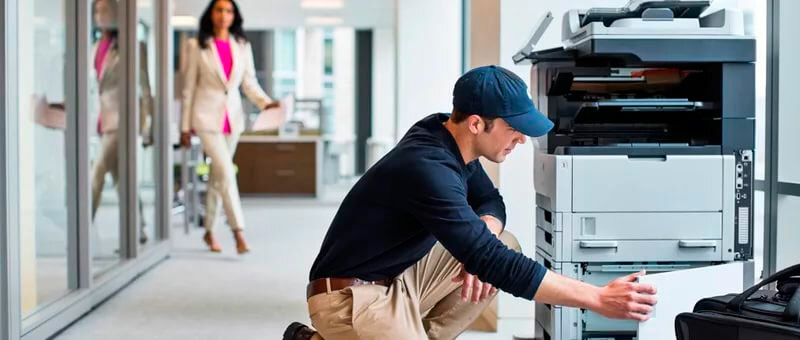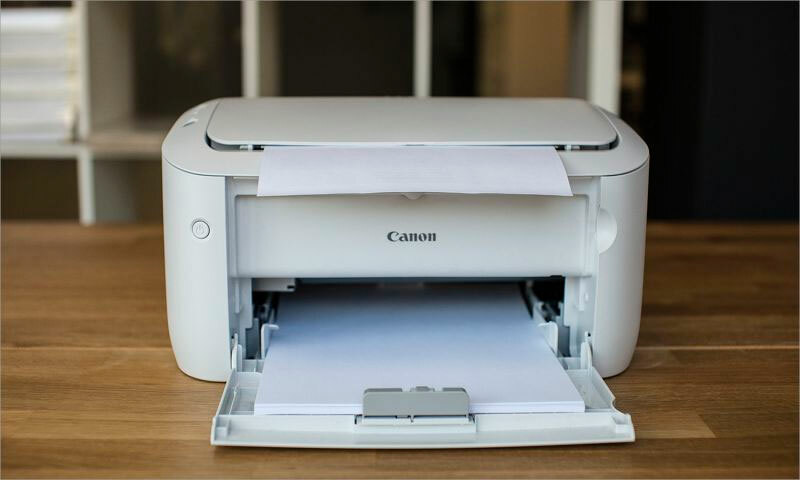Printers exist for a long time. For the years that have passed since their invention, technology has changed, the size of the device has changed, and the cost has significantly decreased. But simultaneously appeared a large number of varieties of the printer, because of which the choice of the device is much more complicated. Especially if you absolutely do not understand anything in computer technology. But if you get acquainted with today's material, you'll find that it's really easy to choose a printer.

Contents:
- The best printer manufacturers
- Principle of operation and printer device
- Types of printers
- Selection parameters
- Which printer to choose
- How much is the printer
The best printer manufacturers
Strangely enough, the market for printers rarely appears new players. This is due to the fact that they buy similar devices in small batches. Yes, many people need a printer. But if it is already bought, then a new printer may be needed only after 10 years, or maybe later. This is not a smartphone, which many people change every two years.
When choosing a printer, we recommend that you pay attention to the following brands:
- Canon is a famous Japanese company that produces not only printing equipment, but also cameras, lenses and even video cameras.
- Brother - often under this brand are produced the most inexpensive printers, while having a very good print quality.
- HP is an American brand, which produces printers, scanners, multifunction devices, laptops and other equipment that can be useful for work, study and entertainment.
- Epson is one of the few companies that tries to regularly introduce into their devices some completely new technologies, speeding up the printing and improving its quality.
- Xerox - this company mainly produces printers for large offices and printing enterprises. Its products are large in size, very high printing speed and frightening ordinary people price tag.
Want to know more about all popular models? Then read our article "The best inkjet and laser printers".
Principle of operation and arrangement of

printers Almost any printer is an external peripheral device of the computer, although many of them are quite capable of starting the printing process without the participation of a PC.There are also portable printers used in conjunction with a smartphone and a tablet, but so far such devices are not very popular.
The printer is designed for printing black-and-white or color documents. At the same time, it is not designed to print tens of thousands of copies at once - this is the case for polygraph equipment used in printing houses.
This is explained by the fact that the printer is working with a print head, the dimensions of which are not large - this does not allow you to print the sheet in a fraction of a second. Also, one kilogram of ink can not be poured into the printer - 100-200 ml of ink is placed in its cartridges, and only a slightly more capacious CISS( continuous ink supply system) is used in some cases.
Each printer includes trays for feeding and outputting paper. They can have completely different capacities. Of course, the office needs a device with more capacious trays, so that workers do not need to put new sheets of paper very often.
Types of printers, their advantages and disadvantages
All modern printers differ in the method of printing. In short, some use liquid ink, while others use toner and laser. And now let's take a closer look at each type of printer.
Inkjet printers

The most common type of device. Printability is provided by ink cartridges or, more rarely, CISS.The number of color cartridges can vary from four to six. The more of them, the more saturated will be printed photos. And for printing ordinary documents there will be enough and four colors. Such devices are slow in terms of output of the first print, since the print head must first be heated.
Pluses:
- The most common inkjet printer is of low cost;
- The device copes with printing photos;
- You can use a continuous ink supply system;
- High reliability;
- Many models are capable of boasting high resolution printing.
Disadvantages:
- Long output of the first fingerprint;
- Many models have a high noise level.
Thermal sublimation printers

Such devices are acquired by the owners of printing centers. They are designed for regular printing in large volumes. Their main advantage are cartridges filled with paint in a solid state - their stock is enough for a very large number of prints. The printer turns the ink into a gaseous state under the influence of high temperature, after which printing begins. The images created in this way can be stored for many decades, practically without fading.
Pluses:
- The output is perfect photos;
- The cartridges are sufficient for a long time;
- The printing process does not take much time.
Disadvantages:
- Very high cost;
- Supplies can not be found in every region;
- Heating can be very long;
- Cumbersome dimensions.
Laser or LED printers

Such devices use for printing special powder and laser, and in some cases - LEDs. Toner laser printer is usually enough for several thousand pages. At the same time, the cost of consumables can not be called high, which leads to a low cost of each printed page. In connection with this, similar devices are regularly installed in offices. But it should be noted that if black and white laser printers are gradually becoming cheaper, then you can not tell about color ones.
Advantages:
- Low cost of print;
- The cartridge should not be changed very often;
- High speed printing;
- Black and white models are relatively inexpensive.
Disadvantages:
- The worst option for printing photos;
- Printing resolution is often very low;
- Color models have an obviously overpriced price tag.

Thermal Printers These devices are used only in the commercial sector. Most often they are built into cash registers, terminals and ATMs. Printing such printers is carried out on thermal paper, some types of which from time to time can completely destroy the printed image.
Advantages:
- The minimum cost of a print;
- Thermal printers are often small in size.
Disadvantages:
- Image is saved on paper not in the best way;
- Most often these devices are designed only for cash registers and similar devices;
- Color printing is often unattainable.

selection parameters If you look at the characteristics of any printer, you will see a large list of them. On what to pay attention in the first place?
Number of colors for printing
The printer can be monochrome, then it uses only a black cartridge. Color models most often work with four cartridges. But there are also so-called photo printers, using five or even six cartridges - mainly for inkjet printers.
Maximum print format
The vast majority of home and office printers print on A4 size paper or smaller. A few models can boast support for printing on A3 paper. And only polygraphic monsters can print an image on paper or film format A0.Typically, these printers are called widescreen, they are placed in firms engaged in outdoor advertising.
Print speed
An important parameter if the printer is purchased for the office. Note that the speed of output of the first print in the characteristics is indicated separately. Just as separately considered the speed of printing a black and white and color document( although in some devices these parameters are the same).
The possibility of two-sided printing
It will not be superfluous if you regularly print on both sides of the sheet. Such a function will significantly speed up the printing of such documents, and also will not allow you to print the second page "upside down".
interfaces To the computer, all printers are connected via a USB port. But sometimes it's easier to connect the device to the router. In this case, make sure that the printer has an RJ-45 port or, as it is also called, Ethernet. At home, the ideal option will be a device with a built-in Wi-Fi or at least Bluetooth. But a memory card slot is often completely unnecessary.
Maximum print resolution
This parameter is measured in dpi - pixels per inch. Cheap laser printers print with a resolution of 600 × 600 dpi. On a printed document, in this case, the graininess is visible, and the font with a very small pin will completely turn into a hodgepodge. The higher the resolution, the clearer a picture you will get on a piece of paper. But do not forget that high resolution results in increased consumption of ink or toner.
paper input and output capacity This option is only important if the printer is selected for the office. It should be noted that some office printers can connect a separate tray of increased capacity.
Cartridge resource
Very important parameter, on which depends how often you have to spend money on consumables. Note that many promo print cartridges come with so-called promo cartridges - their resource is about half as fast. Also pay attention to the name of the cartridges - search the Internet for how much they cost. In some cases, you can stumble on two virtually identical printer, the cartridges to which are completely different money - your choice should be obvious.
memory capacity The least important parameter if the printer is purchased for the home. But in offices sometimes there are times when you need to print a multi-page PDF document. Need I say that it can not fit in 32 MB of memory? It is interesting that office models often support the possibility of expanding the amount of memory - in this case, the characteristics indicate what its volume can be maximum.
Other
specifications Some people may find it important to have a parameter such as power consumption. But much more often users pay attention to the noise level, because I would like to have a quiet house at home. An even more important parameter is the size and weight - if a large unit is required in the office, there may not be a home for it.
Which printer to choose

In short, the choice of a particular printer depends on how you intend to use it:
1. Do you want to put the device at home, and from time to time print something on it for school or college? Then you need an inexpensive laser printer, printing in black and white colors. Or pay attention to the cheapest inkjet models. But be sure to read reviews, as many of these printers quickly fail.
2. Want to print photos regularly? In this case, you need a good inkjet printer, which has four, five or six cartridges. And it is not superfluous to find out whether it is possible to connect to this model CISS.
3. Is the printer purchased for a medium-sized office? Then pay attention to the laser printer of average cost. It can be monochrome. A long cartridge life is required! A roomy paper feed tray is also desirable.
4. Need a device for a very large office? In this case, you need an expensive laser printer that can print in color on A3 size paper.
5. Looking for a device for an outdoor advertising company? Pay attention to widescreen printers. The printing method is not important - it depends on your money and preferences.
6. Need a printer for an ATM or cash register? Your choice is a thermal printer.
7. Will the device stand in the photo center? Then you definitely need a solid ink( sublimation) printer.
How much does an

printer cost The cost of any printer depends on how fast the device prints out the prints, how many colors it uses, how reliable the device is, etc. Earlier laser models were much more expensive than inkjets, but now this only applies to color printers.
If the device is purchased for the house, then you can keep within 6-8 thousand rubles. But if you're going to print photos, you'll have to add about the same amount - then you get a 6-color printer.
Devices for small offices are more expensive - up to 30 thousand rubles. Well and color laser printers can be estimated and in even greater money, here already all depends on that, on a paper of what format is capable to print the chosen device.
The price ceiling for printers is almost none - you can easily buy the unit for 150, and for 250 thousand rubles.
